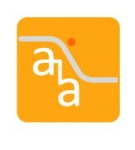Design and Practical Evaluation of a Power Regeneration System for Voltage Source Converters
This paper describes a new circuit for feeding back regenerative power from voltage source converters into the grid. This circuit, consisting of a buck converter and a synchronous rectifier, can be connected to the DC link or the brake chopper connectors. This circuit outperforms active front-end converters because it allows to preserve the typically used uncontrolled bridge rectifier. Since the new circuit can be designed for the actually required regenerative power, it is a cost-effective solution. The first section of this paper describes the operation of systems which use braking resistors. The second section provides an overview of different methods for feeding back braking energy. Finally, this paper focuses on the description of the new recovery circuit and corresponding experimental results. The conclusions are: - (1) A / The recovery circuit can be realised by using a buck converter and a synchronous inverter. (2) Current control can be designed with the magnitude optimum method. (3) Fast disturbance reaction is achieved by adding the estimated mains voltage to the output of the controller as disturbance value. (4) The DC voltage of the frequency inverter and the current in the recovery circuit is comparable to operation with a braking resistor (5) Compared to uncontrolled rectifiers there is less distortion of the mains current.
Das diesem Bericht zugrunde liegende Vorhaben wurde mit Mitteln des Bundesministeriums für Bildung und Forschung unter dem Förderkennzeichen 17052X10 gefördert. Die Verantwortung für den Inhalt dieser Veröffentlichung liegt bei der Autorin/beim Autor.






























































